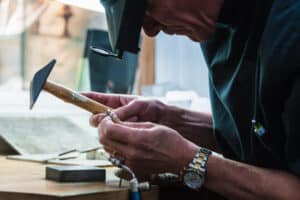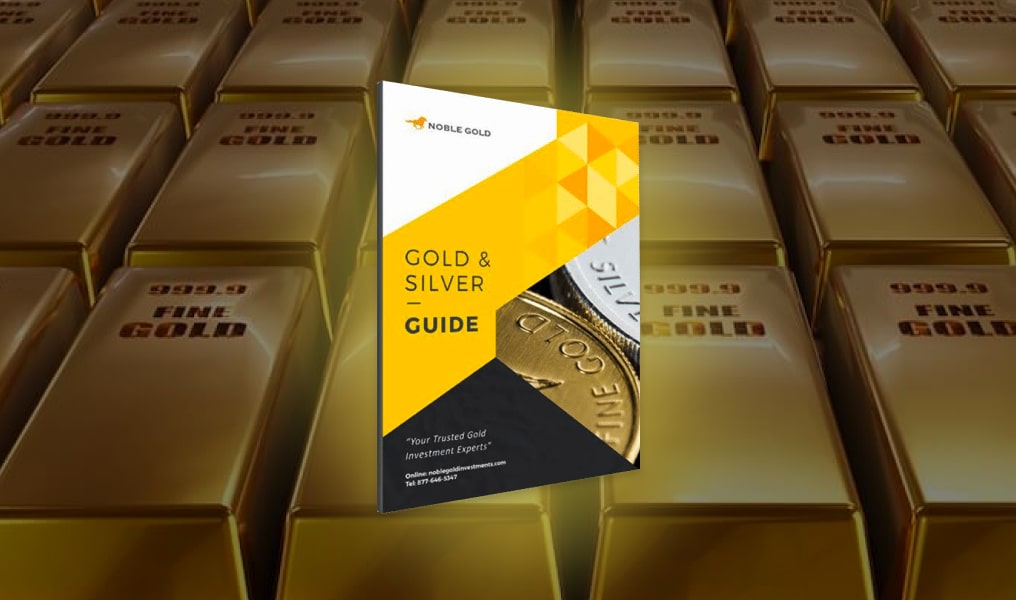Coin collecting represents many different things to different people. Some love the thrill of finding something precious in unexpected places, while others love the security of investing in precious metals they can pass on to their descendants.
A large part of coin collecting is understanding the difference between traditional and uncirculated coins. A common novice mistake is focusing on circulated coins due to their availability and ease of collection. However, uncirculated coins can add significant value to any coin collection and form the foundation of some of the most profitable collections in the world.
What Is an Uncirculated Coin?
Uncirculated coins have never entered a country’s money supply and have never been in circulation. These coins are typically much less worn and blemished than traditional coins, and many have a shiny finish that adds to their aesthetic appeal. However, they are still technically legal tender, though putting them in circulation would dramatically reduce the coin’s collectible value.
While the distinction between a circulated and uncirculated coin is clear, it’s also important to note that uncirculated coins are not proof or bullion coins.
Proof coins showcase the highest quality coins that a mint can produce. These coins receive great attention and care during production, including specialized minting and finishing techniques. Proof coins consist of platinum, gold, or silver, with some mints also offering more affordable base-metal editions. The main reason these coins are so valuable is their high-level craftsmanship, making them a popular collector’s item.
Bullion coins are explicit investment vehicles and come in gold, silver, and platinum. While the design of these coins adds to their collectability, their main worth is due to the intrinsic value of the metal they contain.
BONUS: Learn More About Rare Coins In This Video
Coin Grading Standards
A coin’s grade refers to the number of defects and minor imperfections—the more imperfections, the lower the grade. Most numismatics use a standardized grading scale to ensure that all collectors can agree on how a coin should look according to its grade. Circulated coins can have a grade ranging from PO-1 (poor) — also known as a Basal State coin — up to AU–58 (about uncirculated).
Uncirculated coins have their own grading system, and while certain types of wear and tear, such as bag marks, discoloration, and strong strikes, may affect the coin’s grade, they do not affect the coin’s status.
Uncirculated coin grades include:
- Uncirculated (MS-60 to MS 62): A coin with many noticeable deficiencies, such as poor luster or many bag marks.
- Select uncirculated (MS-63): An average coin with ordinary eye appeal and several deficiencies.
- Choice uncirculated (MS-64): A coin with some distracting marks but overall good eye appeal and fewer defects than lower grades.
- Gem uncirculated (MS-65 to MS-66): A coin with full mint luster and a few minor distracting marks.
- Superb gem uncirculated (MS-67 to MS-69): An almost perfect coin with few distracting or visible marks, though toning (discoloration) is still acceptable.
- Perfect uncirculated (MS-70): An entirely perfect coin.
How To Spot an Uncirculated Coin
The differences between a pristine circulated coin and an uncirculated coin can be very challenging to spot if you don’t know what you’re looking for. However, uncirculated coins have several clear indicators of never being in circulation, and identifying these can ensure you correctly spot an uncirculated coin compared to an “almost uncirculated” circulated coin.
Luster
The minting process produces a particular sheen on the coin’s surface. The moment the coin enters circulation, this sheen begins to wear off. You can look for a coin’s luster by tilting it under a single light source and moving it from side to side and top to bottom. The luster produces a “cartwheel effect”, where the light dances around on the coin’s surface as it moves. The moment a person touches a coin, the luster begins to fade, and the cartwheel effect is less evident.
The challenge of using luster as the sole determinant is that it requires an experienced eye. While the cartwheel effect is easy to spot on larger coins, it may be challenging to identify on small coins. Similarly, luster is more visible on a shiny silver coin than on a more matte surface.
Absence of Wear
While certain defects are acceptable on uncirculated coins, these are usually the result of handling and transportation within the mint. Circulation and handling put very different types of wear marks on a coin, including the absence of luster on the highest points.
Striking
Striking refers to the imprinting of blank disks with the coin’s design. Most mints use coin presses that contain two dies on each side of the coin, which simultaneously imprints the obverse and reverse sides of the blank.
With traditional circulating coins, speed is of the essence, and these coins undergo a single strike from a faster press. This faster process results in less clear detail and a slightly different finish.
Uncirculated coin presses also produce a single strike but at a much slower pace, which results in better detail and a lustrous finish. To prevent errors and miscasts, mints will also hand-polish the press die before a run and hand-finish the coins to ensure a high-quality product.
As the striking process significantly impacts the coin’s final quality, many experienced collectors can recognize the signs of double strikes or hand-polished dies that produce an uncirculated coin.
Packaging
As mints specifically release uncirculated coins as collector’s items, these coins typically come with a certificate of authenticity and dedicated protective packaging. Unfortunately, many extremely old uncirculated coins don’t have their certificates or any packaging, and collectors may have to rely on luster and other indicators to identify the coin’s grade.
Rarity
Uncirculated coins are significantly rarer than normal coins, especially as people may start using uncirculated coins as tender in times of desperation. Typically, very old coins are usually circulated, and it’s wise to be wary of anyone selling coins older than 60 years as uncirculated.
How Uncirculated Coins Are Produced
The U.S. Mint (or any other national mint) is responsible for producing all of the country’s legal tender. Mints also produce numismatic (collector’s) and bullion coins that are not intended for everyday use.
The first step in producing a coin involves creating a blank — the flat metal disk that will eventually become a coin. The US mint produces blanks for most circulated coins but buys blanks for its numismatic coins. Much of the minting process is the same regardless of the coin’s eventual use, except for the striking phase.
Striking refers to the stage where machines simultaneously imprint the coin’s design from both sides. This process can affect the coin’s finish and detail level, determining whether it’s a proof, bullion, or uncirculated coin. Depending on the mint, uncirculated coins undergo one or two strikes to produce a brilliant finish and crystal-clear designs. Most proof coins undergo at least a double-strike process, while bullion and uncirculated coins receive one strike at a much slower pace than their counterparts destined for circulation.
Many mints release dedicated coin sets for a particular year. These sets feature two of each coin that are going into circulation for the year and come in protective containers and with a certificate of authenticity. These sets accumulate in value as they get older and their counterparts in circulation become increasingly less common.
Uncirculated Coins and Their Value
As with most numismatic coins, uncirculated coins derive their value predominantly from their design and rarity rather than the cost of their constituent metals. As these coins get older, their value increases, especially if they remain in their protective casing.
The main driver of uncirculated coin value is rarity. Rare coins can sell for hundreds of thousands of dollars, while common uncirculated coins can cost significantly less. Age can also play a role, as older coins are inherently less common than newer ones. As many collectors buy uncirculated coins as an investment or collectible, they tend to remain in better condition than circulated coins, which may be to their detriment as these coins stay relatively common due to individuals hoarding them.
Uncirculated coins have the same design and contain the same materials as circulated coins, meaning that you can use them as legal tender. However, as much of the appeal of uncirculated coins is that they remain in pristine condition, the moment you put a coin into circulation, it loses much of its collectible value.
The main indicator of an uncirculated coin — its luster — quickly vanishes with even minimal handling. Even if a coin remains without other defects, this lack of luster will immediately downgrade it into the higher grades of circulated coins.
While the probability of finding extremely old, uncirculated coins is slim, it’s a good indicator of how valuable these coins can become. Notable examples include:
- The 1969-S Lincoln Cent with Double Die Obverse: Thanks to a printing error, this penny has two “heads” on each side of the coin. An uncirculated version of this particular coin can go for as much as $35,000 due to its rarity and unusual nature.
- The 1970-S Small Date Lincoln Cent with Double Die Obverse: Similar to the 1969 version, the 1970 penny also had a misprint with a double obverse side. As uncirculated versions of this coin are more common, it is only worth approximately $3,000.
Many collectors prefer mint sets to individual coins. Mints issue these sets yearly and feature versions of each coin going into circulation for a particular year. The U.S. mint released the first mint set in 1947, containing two examples of each coin for that year. The second set from 1948 contained single coin sets from several mints, including Philadelphia, Denver, and San Francisco. The mint sold over 12,000 1947 double sets and 17,000 1948 sets, which currently sell for approximately $1,100 and $800, respectively.
The 2022 Uncirculated Coin Set
Many novice collectors struggle to find sources of uncirculated coins. While you can buy some from your bank, or speak to a dealer like SpaceX Gold, another way to get modern uncirculated coins is to purchase them directly from the mint itself.
The US mint offers annual uncirculated coin sets from one or more of its production facilities. The 2022 United States Mint Uncirculated Coin Set complements currently circulating coinage with uncirculated coins from the Philadelphia and Denver mints. While previous sets came in display folders, the 2022 set comes in two cards (one for each mint), each holding ten uncirculated coins, which include:
- A 2022 Ely S. Parker Native American $1 Coin
- A 2022 Kennedy Half Dollar
- A 2022 Maya Angelou Quarter
- A 2022 Dr. Sally Ride Quarter
- A 2022 Wilma Mankiller Quarter
- A 2022 Nina Otero-Warren Quarter
- A 2022 Anna May Wong Quarter
- A 2022 Roosevelt Dime
- A 2022 Jefferson Nickel
- A 2022 Lincoln Cent
What makes the 2022 set notable includes the six unique designs that the Mint will only print this year. These designs acknowledge the contributions of various individuals to the development and history of the United States.
To keep the value of these uncirculated coins high, the Mint has a production limit of 250,000 sets. Sales in previous years have remained strong, with most hitting the 200,000 mark, meaning that these coins will take some time to truly rise in value. However, they represent an important chapter in U.S. history, and the unique coins are an excellent investment for the future.
Start Investing in Rare Coins with SpaceX Gold Today!
Becoming a coin collector can feel intimidating, especially when you first start. Not only do you have to learn the value of certain coins, but you need to keep an eye out for scams and fakes.
Working with a reputable gold IRA company like SpaceXgold can alleviate many of these headaches. Our knowledgeable agents will help you find rare coins, gold coins, silver coins, and even palladium coins to complete your collection or start your investment journey.
Collecting uncirculated coins is more than just a fun hobby; it’s an investment for the future. Precious metals are an excellent way to diversify your investment portfolio, and numismatic coins are a perfect addition to any self-directed IRA. Get started on your journey with SpaceXgold by calling us today!






